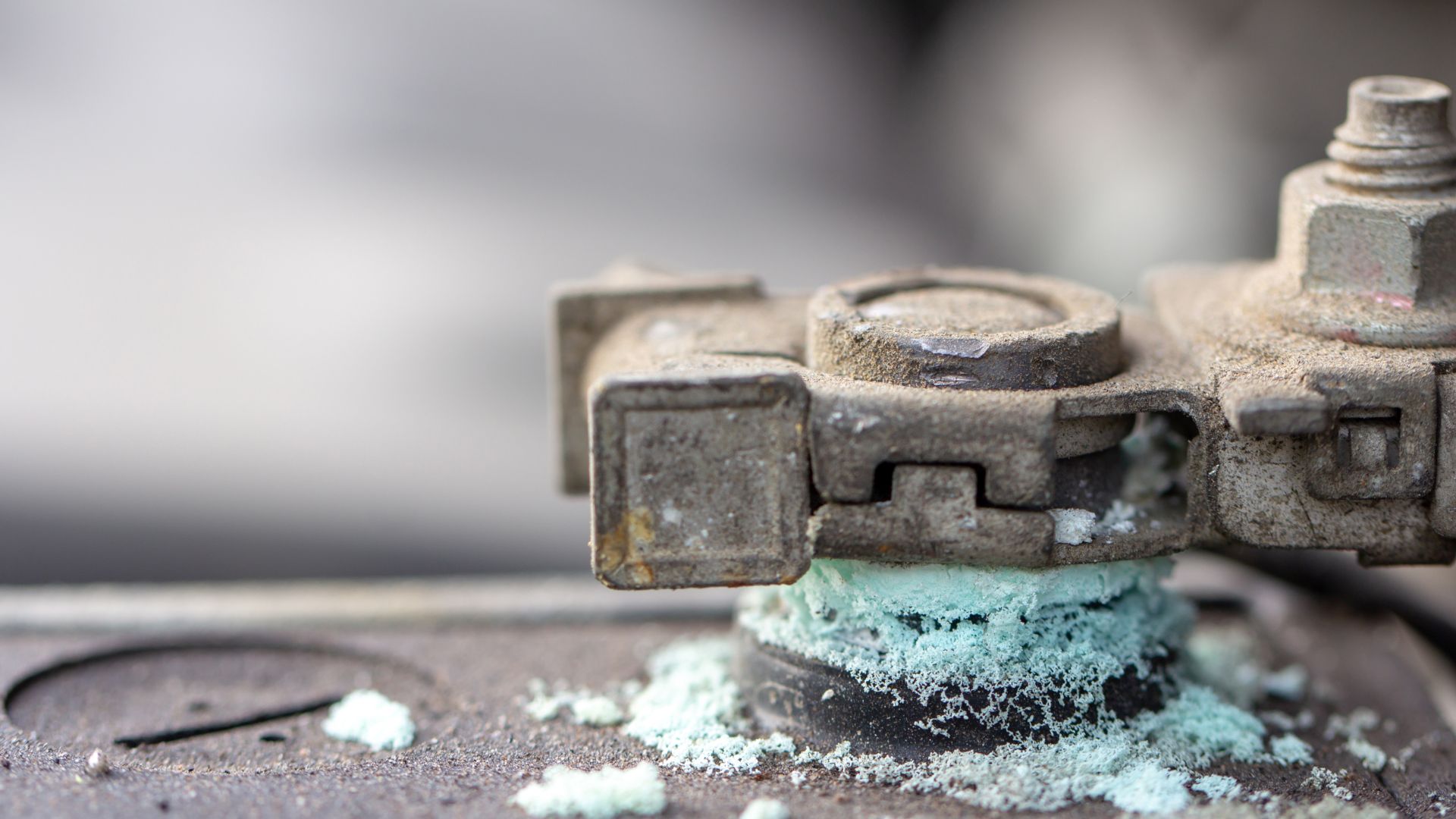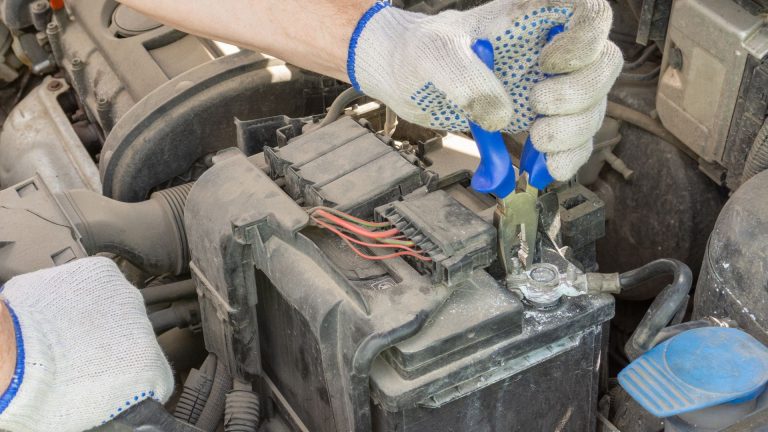Car battery corrosion — causes and fixes
Prevent car battery corrosion with easy maintenance tips.

Your car’s battery is more important than you may think, as it provides the initial power supply to the starter which cranks up your engine. It also keeps your engine running along with its systems that require electricity. So, any problem there might be with your battery could result in serious trouble.
One such unexpected problem is car battery corrosion where the battery terminals or cables corrode and prevent the battery from operating efficiently. In this guide, we’ll go through the reasons behind battery corrosion and the potential problems it might cause.
What is battery corrosion and why does it happen?
While you probably never experienced battery corrosion, it’s not something that should be overlooked, especially from a safety point of view. Battery corrosion is dangerous since it appears by the burst of the acid stored within the battery and their contact with air.
It’s easy to spot the corrosion on battery terminals and cables since it appears as a change of color on battery terminals or cables. You might spot blue, white, or green residue all over the battery and it’s a bad sign for the health of your car’s electrical systems.
Also, it’s dangerous to touch the battery without gloves in this case, and it’s essential that you responsibly handle the situation. Various reasons lead to battery corrosion – from an old battery to stuck vents and leak of acid fluid from the battery, it’s all a possibility.
In case of corrosion on the battery, you should deal with the matter immediately to avoid poor battery performance and even worse consequences for your car. The right way to deal with this issue is to measure the battery voltage and look into the reasons behind battery corrosion.
Problems caused by battery corrosion
There’s one main consequence of battery corrosion that sort of leads to all the other problems triggered by a corroded battery. If the battery is corroded, it will negatively reflect its power supply ability and the electrical connections to all systems of the vehicle will be compromised.
In other words, your car might not receive the proper amount of electricity at the right time for some actions, and it might cause one of the following problems:
- The car won’t start
- Weak power supply to car’s electrical features
- Problems with the ECU
- Fried connections and faulty electrical components
If you see a battery discharge warning light on the dashboard, it could be a result of corrosion. In this case, the alternator might not be able to charge the battery properly while driving. So, once you shut off the engine, if the battery didn’t receive enough power from the alternator, it will be weak.
It further leads to problems starting your engine the next time you get into your car. The best thing to do here is to check the battery visually, and if you spot any colored residue, either clean it or replace the battery.
Fixing a corroded battery

There are several things you can do in case your battery’s terminals and cables are corroded. Of course, the first thing that comes to mind is to replace the battery with a new one, but it’s not the most cost-efficient solution.
While it’s best to leave the corrosion removal job to a trusted mechanic, there are some steps you can take to clean the corrosion yourself.
To do so, there are several specific steps you’ll need to take to clean the battery without endangering yourself or messing up the car’s electrical systems. These include getting the right set of cleaning substances, detaching the battery terminals, cleaning it, and finally installing it back on your car.
Safely disconnect the battery
To prevent the corrosion from making your battery deteriorate and become too dead to jumpstart, it’s important to clean it or replace it as soon as you spot the corrosion. If you are going to clean the battery without the help of a mechanic, it’s important to disconnect it safely first.
It’s important that your car is turned off and the key is out of the ignition. Also, you’ll want to disconnect the negative cable from the negative terminal first and do the positive one after. This way you’ll make sure to avoid any electrical faults or sudden shocks that might be dangerous.
Once the battery is safely disconnected, you’ll need a set of cleaning substances to remove the corrosion.
Apply terminal cleaning substances
The next important step is to have the right set of cleaning substances, and grabbing the battery terminal cleaner from the store is your best option. However, you can also use baking soda or a substance with the addition of carbonic acid to clean the corrosion.
If you are using baking soda, simply apply it to a cup of water and spread the solution over the corroded battery parts. It’s also possible to place a bit of baking soda on the terminal and corroded surfaces first and then add a bit of water.
Give it some time to work and make sure to properly scrub with a brush to properly remove the corrosion. If you are using a terminal cleaner agent, you’ll find the cleaner in form of a spray so you can apply it to corroded parts.
Reconnect the battery cables to the terminals
After about half an hour of letting the terminal cleaner or baking soda solution to work, it’s time to test the results. Try to reconnect the battery again by reversing the order of things this time. So, you’ll first need to attach the positive cable to the positive terminal, and then deal with the negative one.
After that, you can start your car and let it run to see the results or use a voltmeter to test the battery voltage. It should read around 12 volts if the battery is fully operational and the corrosion has been successfully removed.
Preventing car battery corrosion
If you are servicing your car regularly and changing the battery as it ages, you probably won’t deal with much corrosion. However, it comes in handy to know how to prevent this from happening so you won’t face any battery-related issues, at least in terms of corroded terminals.
The best way to prevent battery corrosion is by simply dealing with battery charging issues on time and applying timely maintenance.
You can also use a few tricks like applying a protective coating made of grease or petroleum jelly which will help prevent the acid reaction.
Getting a terminal protector can also be the solution and you can install these to keep your battery’s terminals clean from corrosion. In this case, it’s still necessary to apply some coating, to be sure. Using these techniques might protect your battery for years depending on how much you drive your car.
Our take
Overall, the car battery corrosion problem is sort of an unexpected headache you might get which could lead to a battery replacement. Luckily, you can use the methods listed in this guide to clean the corrosion and prevent the problem from ever happening.
It’s worth occasionally checking the battery to see if there’s corrosion as it only takes a few seconds to do the visual inspection, which can save you trouble.
Does corrosion on a car battery mean it needs to be replaced?
No, corrosion on a car battery doesn’t necessarily mean it needs to be replaced since it’s possible to clean the corrosion in the early stages. You can apply a baking soda solution or a battery terminal cleaner to do the job, but make sure you’ve safely disconnected the battery beforehand.
What does corrosion on a car battery mean?
Corrosion on a car battery means there might be acid leaks from the battery and the electrical power supply might be compromised.
What to do if there is corrosion on the battery?
If there’s corrosion on the battery, you can either clean it or replace the battery to restore the electrical power supply to the vehicle’s systems.
Will corrosion on the battery keep it from starting?
If the problem with battery corrosion isn’t dealt with on time, it can keep the car from starting.